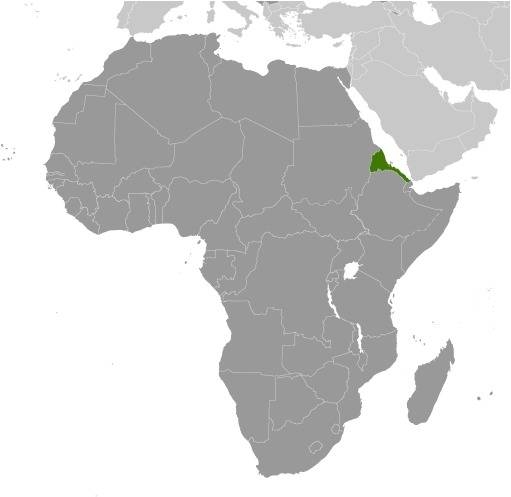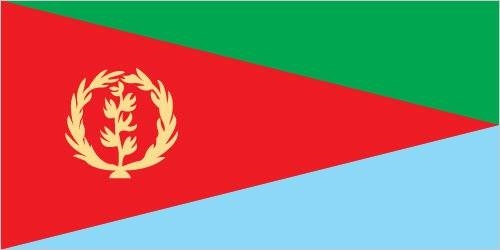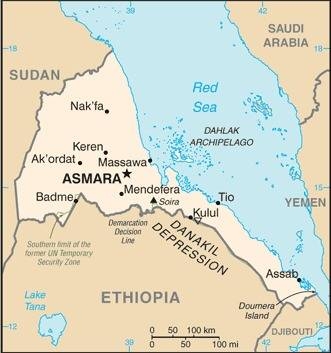Country Summary




Introduction
Background
After independence from Italian control and then UK oversight, the UN established Eritrea as an autonomous region within the Ethiopian federation in 1952. Ethiopian annexation sparked a 30-year struggle for independence that ended in 1991. Eritreans overwhelmingly approved independence in a 1993 referendum.
Geography
Area
total: 117,600 sq km
land: 101,000 sq km
water: 16,600 sq km
Climate
hot, dry desert strip along Red Sea coast; cooler and wetter in the central highlands (up to 61 cm of rainfall annually, heaviest June to September); semiarid in western hills and lowlands
Natural resources
gold, potash, zinc, copper, salt, possibly oil and natural gas, fish
People and Society
Population
6,209,262 (2022 est.)
Ethnic groups
Tigrinya 50%, Tigre 30%, Saho 4%, Afar 4%, Kunama 4%, Bilen 3%, Hedareb/Beja 2%, Nara 2%, Rashaida 1% (2021 est.)
Languages
Tigrinya (official), Arabic (official), English (official), Tigre, Kunama, Afar, other Cushitic languages
Religions
Eritrean Orthodox, Roman Catholic, Evangelical Lutheran, Sunni Muslim
Population growth rate
1.03% (2022 est.)
Government
Government type
presidential republic
Capital
name: Asmara
Executive branch
chief of state: President ISAIAS Afwerki (since 8 June 1993); note - the president is both chief of state and head of government and is head of the State Council and National Assembly
head of government: President ISAIAS Afwerki (since 8 June 1993)
Legislative branch
description: unicameral National Assembly (Hagerawi Baito) (150 seats; 75 members indirectly elected by the ruling party and 75 directly elected by simple majority vote; members serve 5-year terms)
Economy
Economic overview
largely agrarian economy with a significant mining sector; substantial fiscal surplus due to tight controls; high and vulnerable debts; increased Ethiopian trade and shared port usage decreasing prices; financial and economic data integrity challenges
Real GDP (purchasing power parity)
$9.702 billion (2017 est.)
Real GDP per capita
$1,600 (2017 est.)
Agricultural products
sorghum, milk, vegetables, barley, cereals, pulses nes, roots/tubers nes, wheat, millet, beef
Industries
food processing, beverages, clothing and textiles, light manufacturing, salt, cement
Exports
$624.3 million (2017 est.)
Exports - partners
China 62%, South Korea 28.3% (2017)
Exports - commodities
gold and other minerals, livestock, sorghum, textiles, food, small industry manufactures
Imports
$1.127 billion (2017 est.)
Imports - partners
UAE 14.5%, China 13.2%, Saudi Arabia 13.2%, Italy 12.9%, Turkey 5.6%, South Africa 4.6% (2017)
Imports - commodities
machinery, petroleum products, food, manufactured goods
Exchange rates
nakfa (ERN) per US dollar -
Page last updated: Wednesday, June 15, 2022
